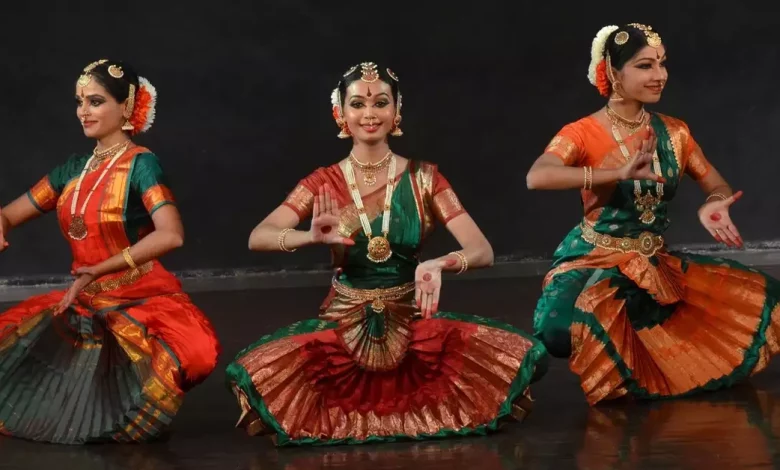
Context- Bharatanatyam dancer Saroja Vaidyanathan has passed away. The classical dancer was awarded Padma Shri in 2002 and Padma Bhushan in 2013.
Key Highlights
- Bharatanatyam in Tamil Nadu, South India grew out of the art of dancers dedicated to temples and was earlier known as Sadir or Dasi Attam.
- It is a popular classical dance form in South India.
- It is the first of the Indian traditional dances to be recast as a theatrical art form and has been widely performed both at local and international.
- Bharatanatyam is based on principles of performance and aesthetics defined in classics such as Bharata Natyashastra.
- It has a rich repertoire of Telugu, Tamil and Sanskrit songs.
- Bharatanatyam has a highly developed language Nritta, an abstract dance and Nritya that opens the story.
- The themes range from human love to divine love and are usually classified under the headings of shringara (romantic love) and Bhakti (devotion).
- Bharatanatyam music belongs to the Carnatic systems of South India.
- Some of the common instruments that accompany a Bharatanatyam dancer in a performance are: Mridangam, Veena, Flute, Violin, Talam, Ghatam, Kanjeera, Tambura, Nadaswaram and Harmonium.
Elements of Bharatanatyam:
- Bhava (Expressions): Bharatanatyam performers must master the ability to portray different facial expressions according to the song/song.
- Expressions of joy, surprise, anger, sadness, love, etc. help to communicate during the performance.
- Hastha Mudra (Hand Gestures): Hand gestures and forming different shapes with finger movements are an important part of Bharatanatyam performance.
- Thala: A Bharatanatyam performance is performed to the beat of soulful Carnatic music. Thalasso represents eight rhythmic intervals.
- Dance: Bharatanatyam dance features a carefully choreographed and well-rehearsed dance performance that utilizes the entire stage space and displays intricate body movements and dance steps that are perfectly synchronized with the music, facial expressions and hand movements.
- Statue of Nataraja: Most of the Bharatanatyam dances are performed in front of the statue of Lord Nataraja.
- All performances begin with a prayer and a first step paying homage to Lord Nataraja.
- Dress: Bharatanatyam performers (women) wear silk sarees and matching ornaments, jewelry and metal bells (gay) on their wrists and ankles.
- Male performers wear silk dhoti, shalya and minimalist jewelry.
- Performers: Bharatanatyam is performed by both male and female artists.
- However, most of the artists are women.
- Solo/Group: Bharatanatyam can be done alone or in a small group.
Note:
- All forms of classical dance are based on the so-called Fifth Veda, Natya Shastra.
- Although the exact origin of this text cannot be determined, it is mythologically believed that Sage Bharata codified and documented the Natya Shastra at the request of Lord Brahma.
Source: Indian Express
Practice question:
Q. How do you distinguish between Kuchipudi and Bharatanatyam dances? (2012)
- Dancers occasionally speaking dialogues is found in Kuchipudi dance but not in Bharatanatyam
- Dancing on the brass plate by keeping the feet on its edges is a feature of Bharatanatyam but Kuchipudi dance does not have such a form of movements
Which of the statements given above is/are correct?
- 1 only
- 2 only
- Both
- None





.png)



